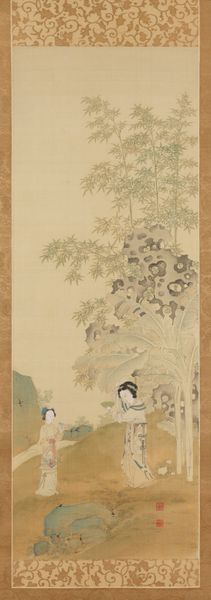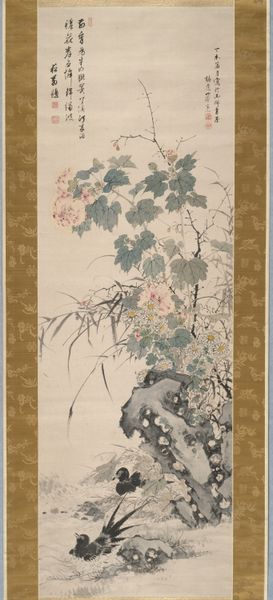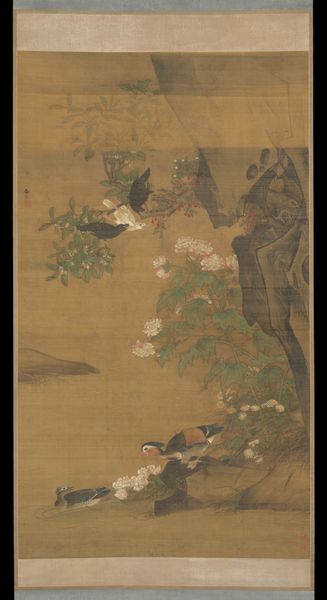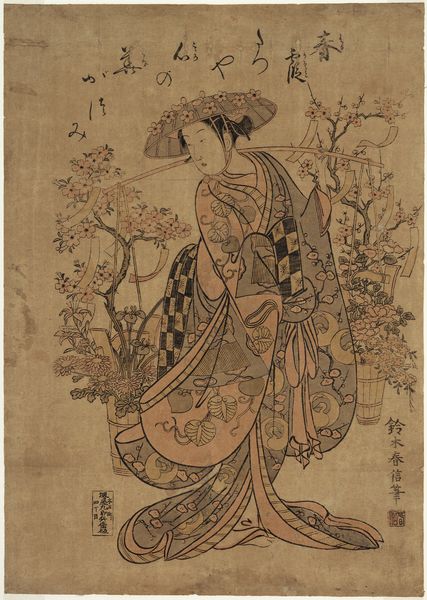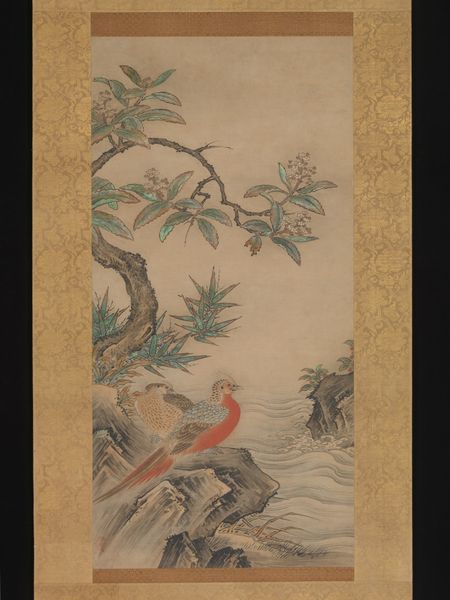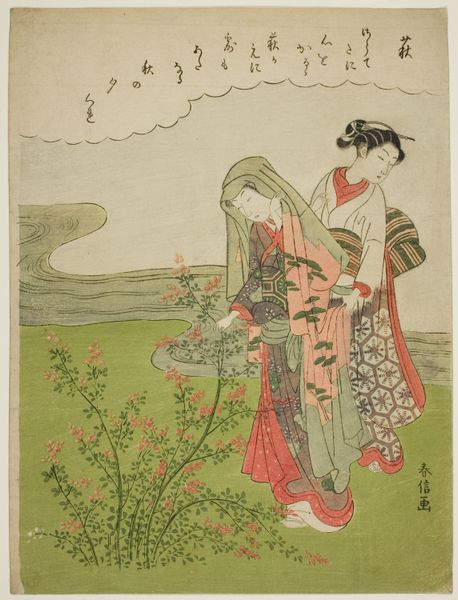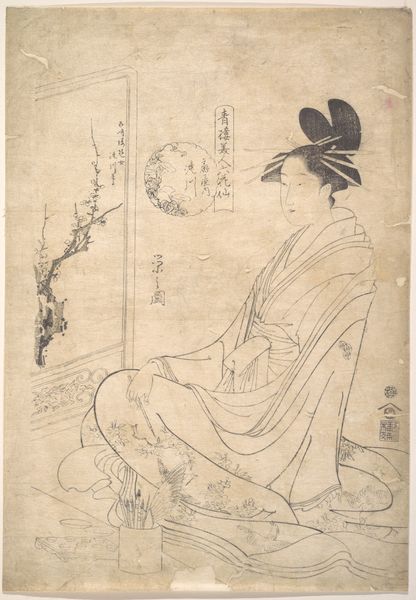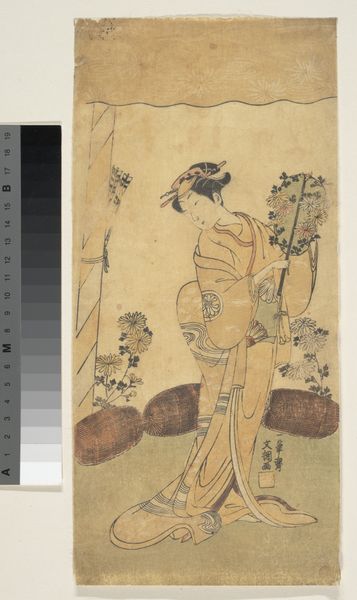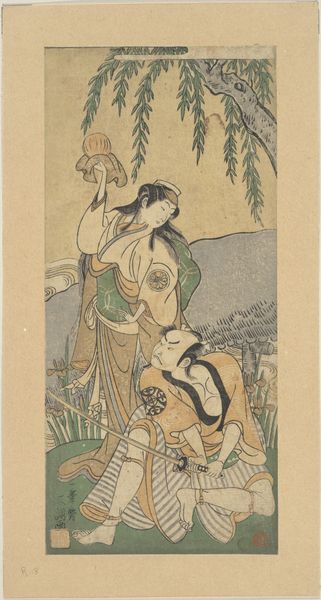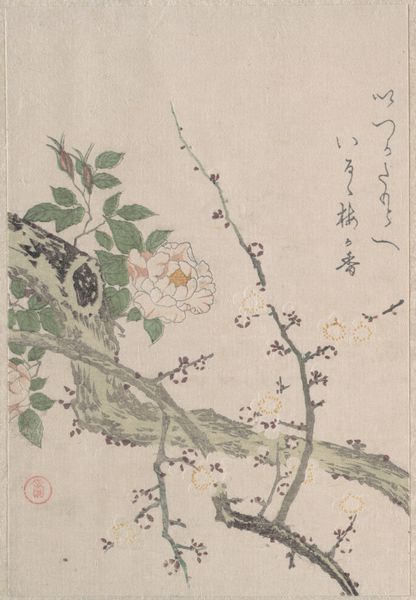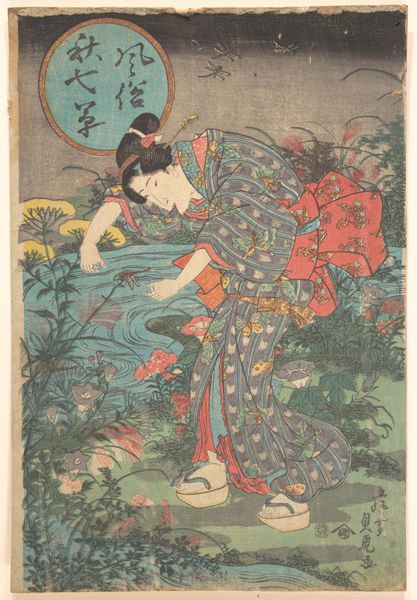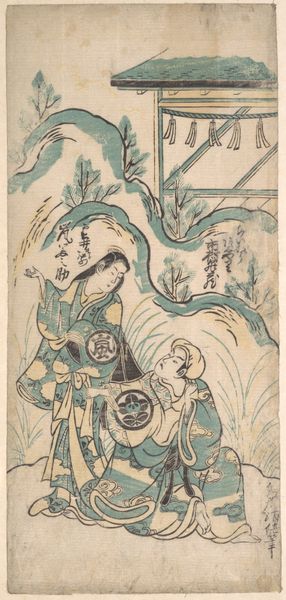
drawing, print, paper, ink, woodblock-print
#
drawing
# print
#
asian-art
#
landscape
#
ukiyo-e
#
figuration
#
paper
#
ink
#
coloured pencil
#
woodblock-print
#
botanical art
Dimensions: height 368 mm, width 255 mm
Copyright: Rijks Museum: Open Domain
Editor: Here we have Nakayama Sugakudo’s “Young Thrush, Flowering Pea, and Rapeseed,” a woodblock print from 1860 currently housed in the Rijksmuseum. It's so delicate, almost ephemeral. I’m really struck by the way the artist uses such simple materials to create such a vibrant image. What do you see in this print? Curator: What catches my eye is how this piece invites us to consider the socio-economic aspects inherent in its creation. The paper itself, the inks derived from specific materials, and of course the woodblock printing process; these weren’t just artistic choices but rather tangible reflections of resource availability, trade networks, and the division of labor that existed in 19th century Japan. Editor: I hadn’t thought of it that way, but it makes sense. Ukiyo-e prints were popular, so I guess the means of production were just as important as the artistic skill? Curator: Exactly! Consider the skilled artisans involved in carving the woodblocks and the printers applying the colors. Their labor, often overlooked, was integral to the final product. We see the commodification of nature itself – these plants, this bird rendered through an industrial, if artisanal, process. Are we meant to simply admire the pretty picture or contemplate this implicit relationship between the subject matter and the means by which it’s being produced? Editor: So, beyond the aesthetic value, we should also be thinking about the processes and materials and labor? It makes me think about how we consume art today, and what gets lost in the final polished product. Curator: Precisely. By focusing on the materiality and production, we can challenge this idealized view of art and understand it as deeply embedded in its social and economic context. Editor: I'll never look at a woodblock print the same way again. It's really opened my eyes. Curator: And that's the goal, isn't it? To see beyond the surface and appreciate the intricate connections between art, material, and society.
Comments
No comments
Be the first to comment and join the conversation on the ultimate creative platform.
